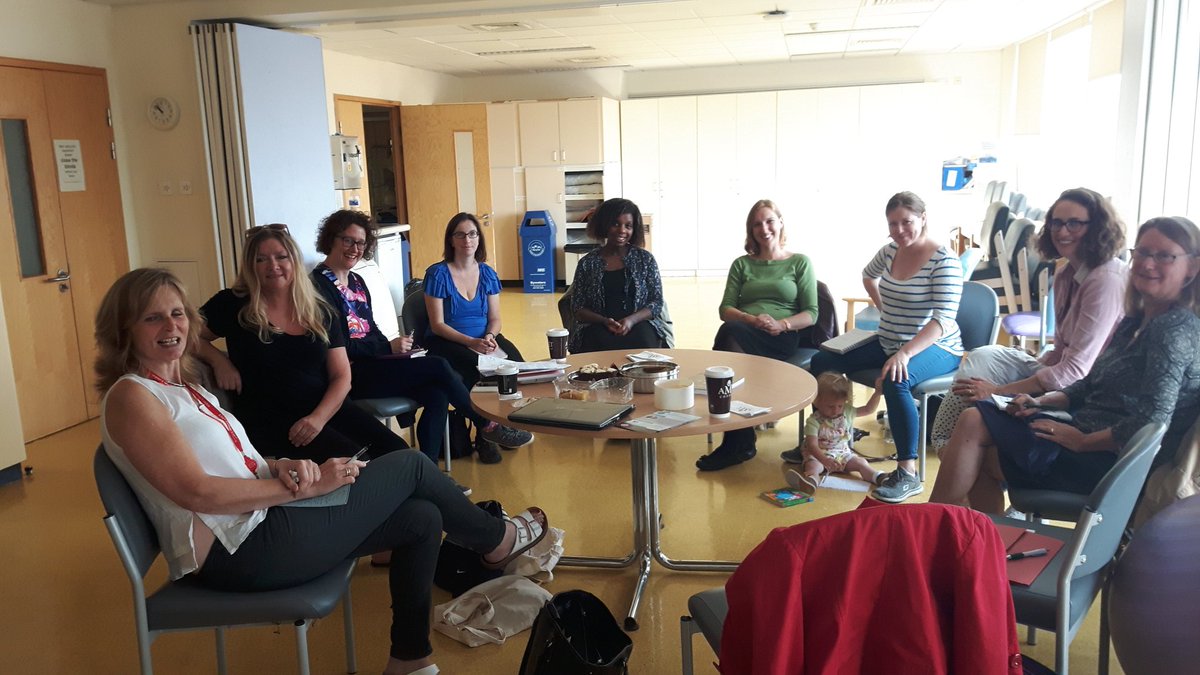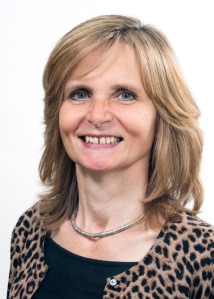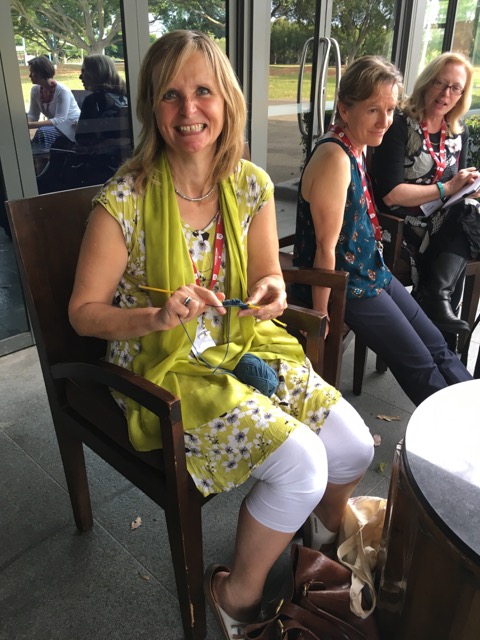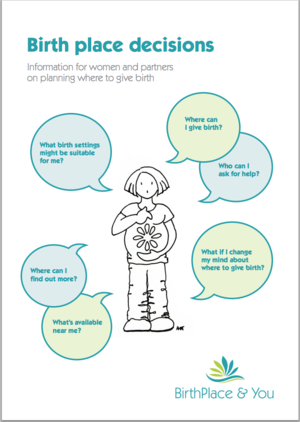 Image copyright Laura James, who presents on MSLCs at Women’s Voices Conference 2016
Image copyright Laura James, who presents on MSLCs at Women’s Voices Conference 2016
South London MSLC network
Yesterday morning, I was bound for St Thomas’ Hospital near Waterloo station, for the south London maternity services network gathering. It’s our informal meeting for service user reps and interested others across south London, where there are 10 MSLCs in total.
St Thomas’ is the one that looks across the Thames to parliament. (Or the hospital that you see from The Terrace if you go to a smart parliamentary reception.) It’s the institution I am linked with via my work for Kings College London’s Women’s Division and CLAHRC[1] South London. Armed with cake and tweeting en route, delayed by a late train and a mix up over the venue, I arrived to find mums with babies and two MSLC chairs already chatting. More and more people arrived. Until…
…we had a gathering of:
- Two from St Thomas’, the co-chairs who invited anyone keen to stay on for lunch and to observe their MSLC meeting immediately afterwards.
- Two from Bromley MSLC, where there is some great succession planning going on.
- Two from St George’s, the current and immediate past Chair. Rosie Goode came with a commitment to get service users involved in the Personalisation and Choice Pioneer project in SW London, and happy exhaustion, having been right-hand woman to Milli Hill in organising last week’s first Positive Birth Movement Helen Gray IBCLC, brought PowerPoint slides to share with others, promoting ‘Women’s Voices’ work and MSLCs.
- Two from Kings’, where one leads on social media and another leads the meetings.
- A local mother who is setting up Everywomen came along with her baby.
- Epsom and St Helier was represented by Maria Booker, whose paid work is with BIrthrights. (Birthrights CEO, Rebecca Schiller’s new must-read, Why Human Rights in Childbirth Matter, was launched last Thursday by Pinter and Martin at Effraspace.)
- Midwife researcher, Wendy Carter, who came to talk about hypertension in pregnancy, how much women know about it and what MSLCs and service users think might be helpful in raising awareness and improving woman-centred care.
With me, that was 12 of us!
We started by asking what people wanted to get out of the meet-up. Needs and priorities were many and varied:
- Updating on the refreshed guidance for maternity partnerships (MSLCs), which is in development, sponsored by NHS England.
- Finding ways of marketing awareness of, and support for, the MSLC and succession planning.
- Concern about the quality of postnatal care. Women feeling traumatised by poor support.
- Need for more peer support postnatally.
- Networking with other people and other MSLCs.
- Increasing diversity and involvement in the MSLC.
- Tips on how to run an effective MSLC and how to escalate issues / involve other agencies, such as the local authority, if necessary.
- Sustainability and Transformation Plans (‘STPs’) see the following link https://www.england.nhs.uk/ourwork/futurenhs/deliver-forward-view/stp/
- SW London as a Maternity Choice and Personalisation Pioneer see the following link https://www.england.nhs.uk/ourwork/futurenhs/mat-transformation/mat-pioneers/
- How much MSLC budgets are/should be to cover community involvement activities.
By the time everyone had said hello and expressed their needs and priorities there was just an hour of the meeting left, a long list of fascinating and varied topics to consider AND a research project to explore.
Updated Maternity Partnership (MSLC) Guidance
I was able to share the updated (still draft) guidance, 2016 Guidance for Maternity Systems: Setting up and sustaining a Maternity Voices Partnership, with everyone. There should be a sharing version available by 12 November, the date of the NCT maternity services service user involvement day, being held in Bristol.
Among our group today there was a good deal of support for a re-launch of partnership working and support for the new generic name: Maternity Voices Partnership.
There was warm enthusiasm for clear guidance for commissioners, that MVPs need to be ‘well led and properly resourced’.
The draft guidance emphasises that there is a new commitment to the values and practice of co-design and co-production, recognition of need for community development work, and shared training to develop this way of working in every area through local maternity systems. Everyone hoped that this impetus would move good practice forwards.
With so much happening in terms of strategic planning for maternity services in 2016 and the rights of service users to be involved in both shaping ideas and in decision making, guidance will be shared in draft while it progresses through the formal ‘gateway’ process for formal publications. This will speed up getting it into the public domain. NB: The ‘collective voice’ of women, families and communities should be ‘integral … now, at this formative stage’.
There are around a dozen practical documents in the guidance: such as the principles of co-design and co-production, tips for commissioners setting up an MVP, induction materials for MVP members, a terms of reference template to be adapted locally, help to get started in using social media, a voluntary organisations directory, training ideas and troubleshooting Q&As.
Sustainability and Transformation Plans
There is so much strategic planning going on at different levels. The Sustainability and Transformation Plans (flagged up at the start of the meeting) are one example. Another example, discussed at the Guy’s and St Thomas’(GSTT) MSLC meeting, later, was a GSTT Better Births board which coordinates developments from a range of working groups each following up different groupings of the 28 recommendations in the Better Births report.
My contact at NHS England feels it is impossible to give definitive guidance on which specific planning groups and plans MSLCs (or MVPs), should be involved with. Things are changing fast (and it is easy for service users who volunteer, or are paid to work part-time on their MSLC, to feel overwhelmed by demands). Rather than give a blue-print list, her suggestion was to create a culture locally where service users are assertive and valued; where they are involved. This means getting managers, and different groups and bodies within, and above, the local maternity system, to explain significant planning mechanisms and the timeframes for involvement and decision-making. It won’t be possible to participate in a meaningful way in all the development initiatives, but there should be transparency, clear induction for MSLC/MVP members and regular reporting, so that service users can say when and how they want to be involved, and be worked with as equals.
Information support and care for women with hypertensive disorders
Midwife, Wendy Carter shared key findings from her PhD study Speaking up, Listening and Responding: an in-depth qualitative case study exploring factors affecting women with signs and symptoms of pre-eclampsia seeking help. The themes emerging from the research so far, resonated with MSLC members. Despite having had children and being involved in maternity for quite some time, several said that their own knowledge about hypertensive disorders in pregnancy was quite limited. Information published by Action on Pre-Eclampsia (APEC) was praised as useful by one antenatal teacher. Ideas about sensitive and effective times and places to address the gaps in knowledge were passed on to Wendy.
Practical tips for chairing and co-production
Helen Gray emphasised the importance of cutting to the chase in meetings and spending time on the important substantive topics.
Rosie Goode, suggested having one main topic per meeting, so that some real work could be done, rather than just skimming the surface was valuable.
Laura James described how in Bromley parents are invited via the Facebook group, Twitter and posters in the hospital to attend a get together in a community setting or someone’s home to share their positive experiences and any concerns. The feedback is written onto coloured post-it notes and stuck onto sheets labelled ‘Congratulations’ and ‘Considerations’. These are taken seriously by managers. The feedback is displayed publically in the hospital. Staff who are praised by women and families for their care get recognition for it. Negative feedback is also fully acknowledged and actions are planned to address it.
At the GSTT MSLC meeting a consultant midwife at St Thomas’ also described taking action to address staff behaviour after listening and hearing negative feedback from women at the debriefing service the trust provides.
The value of the chair (or chair team) planning consciously before a meeting what they want to achieve, was also discussed. And working to the principle of ‘You said, we did’ to ensure that actions are both planned and reported.
Agreements
Everyone present consented to photographs being taken and their contact details and social media names being shared with the name of their MSLC, to facilitate networking in between meetings.
We agreed to share documents across the network, such as MSLC presentations, ideas, good practice tips, annual reports, meeting agendas and minutes.
The next meeting will be in November in the same venue as there was plenty of space for adults and South London MSLC network meeting.
And the rest…
Quite a lot more was shared, such as…
Women’s Voices Conference 2016 – This really exciting event organised by South London mother and MSLC member Michelle Quashie, on 1st October, can be booked at https://www.eventbrite.co.uk/e/womens-voices-conference-2016-tickets-25598971212
Vaginal breech – Rosie Goode said that GSTT had recently provided vaginal breech birth training for quite a lot of their staff, and so St Thomas’ was a good place to book for women with a persistent breech baby wanting a vaginal birth, plus other south London trusts could learn from this example.
Booking with a trusted and admired home birth team if out of area – Emily Levis (Stowe) said she was aware of women outside of the catchment area for St Geoerge’s Hospital were wanting to book with the St George’s home birth team, and what was there right in this regard. On reflection, it would be useful to get view from Birthrights on this question. It occurs to me that if they are close to the boundary and/or the quality of service offered by the service covering their street/postcode is demonstrably less good in some way, they might have a good case to make. But ask the experts!
Please add to this if you were at the meeting.
[1] Collaboration for Leadership in Applied Health Research and Care, is a research initiative ‘Investigating the best way to make tried and tested treatments and services routinely available.’ Find out more about the maternity research. Follow @CLAHRC_SL
.



 Image copyright Laura James, who presents on MSLCs at
Image copyright Laura James, who presents on MSLCs at  I’ve been asked to write about my involvement with NCT. When and how I got involved with research and maternity services activity. I’ve been asked how NCT has gone about having influence, so have been sharing this kind of information with women in other countries recently. And I will add more. Let me know if you have any questions or feedback.
I’ve been asked to write about my involvement with NCT. When and how I got involved with research and maternity services activity. I’ve been asked how NCT has gone about having influence, so have been sharing this kind of information with women in other countries recently. And I will add more. Let me know if you have any questions or feedback. The Birthplace in England study, a large, prospective cohort study of direct relevance to our maternity services, showed that pregnant women at low risk of complications (generally, women who are healthy with a straightforward pregnancy, and no previous obstetric complications) are more likely to have their whole labour and birth without the need for medical procedures (epidural, episiotomy, forceps, ventouse or an emergency Caesarean section) if they plan for a home birth rather than book for care in an obstetric unit. For ‘low-risk’ women who have previously had a baby, planned home birth is very safe. For ‘low-risk’ first-time mothers, there is a small additional chance of an ‘adverse’ outcome, but the absolute risk is still very small.
The Birthplace in England study, a large, prospective cohort study of direct relevance to our maternity services, showed that pregnant women at low risk of complications (generally, women who are healthy with a straightforward pregnancy, and no previous obstetric complications) are more likely to have their whole labour and birth without the need for medical procedures (epidural, episiotomy, forceps, ventouse or an emergency Caesarean section) if they plan for a home birth rather than book for care in an obstetric unit. For ‘low-risk’ women who have previously had a baby, planned home birth is very safe. For ‘low-risk’ first-time mothers, there is a small additional chance of an ‘adverse’ outcome, but the absolute risk is still very small.